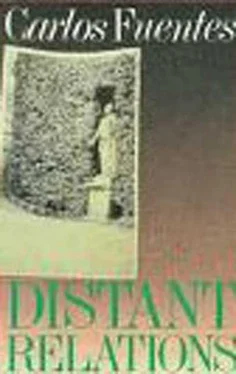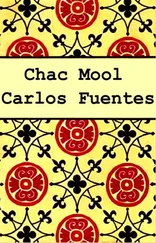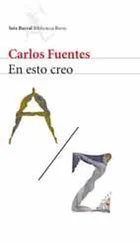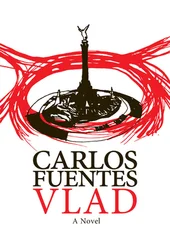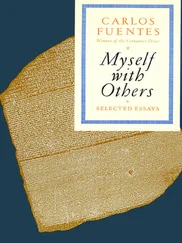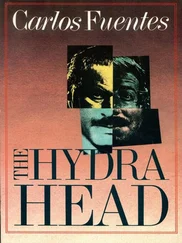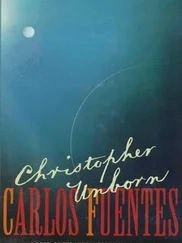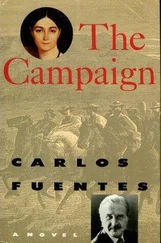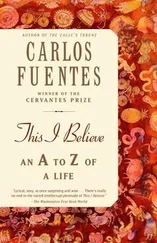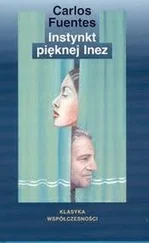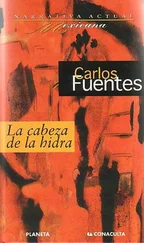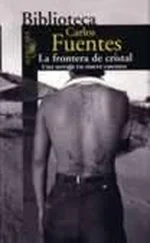“That may be so,” I replied, “but it is impossible to distinguish the line between that golden maturity and the corruption that hastens, even precipitates it. A dark, repulsive fungus, Branly, call it noble decay if you will. And that’s true of the sauterne.”
“As I have told you, I could not anticipate the events of this narrative, even though I have lived it, because it was one thing to live it and another to tell it.”
“But now the story is finished, and even though I didn’t seek it, you have made me the new narrator of everything you have told me.”
My friend seemed indifferent to my words, as if they were the accepted corollary to his story. I did not fully understand the nature of his disillusionment when, turning his heavy head to look at me, he replied that only part of what I said was true. I had become a probable narrator of his story, but the story was not concluded. No, it is the nature of narrative to be incomplete, to be contiguous with another story.
He answered my questioning look by wrapping himself more tightly in his white terry robe and asking with nervous severity, cold but inviting the heat the acceptance of his words would incur, what do you think a man like myself would do, a man in whom duty and pleasure have learned to live side by side, but only as long as they were justified and unified in the present, not in nostalgia, my friend, or hope, but in a sense of the present, the here and now, embodying the obligations as well as the potential of time; what is the meaning of being who I am and as I am, tell me, if I refuse to accept that sense of the present that others call responsibility, yes, but the ultimate responsibility that excludes, now listen carefully, any pretext of the now —“not this, it has already happened, or this, because it is still to come”—unless it encompasses a concept of being. Nothing dies completely unless we ourselves are guilty of condemning it to death by forgetting it. Oblivion is the only death; the presence of the past in the present is the only life; and this is what I came to understand after I returned to my house and reviewed my adventure with the Heredias. It is also what finally bound me to Hugo Heredia, in spite of everything that stood between us.
“What do you think a man like myself would do?” Branly repeated after an imperceptible pause.
“You went to Mexico to look for Hugo Heredia.”
Again he closed his eyes, and said that he would tell me word for word what Heredia had told him late one October afternoon after Branly had located him in Xochicalco working in the excavations of the ancient Toltec ceremonial center beside the deep barranca that plummets from the altar to the floor of the Valley of Morelos and its profusion of extinct volcanoes.
“Every story is contiguous with another,” my friend repeated. “I want to be as faithful as possible to the story of Hugo Heredia. Later you will understand why.”
He asked that for the moment I limit myself to considering whether he and I were capable of re-creating with total fidelity the events of the afternoon from the moment I entered the club dining room and he saw me and suggested we lunch together. Could I see myself as I saw him? Could he see himself as I saw him? Could we both, through a supreme joint effort, re-create with verisimilitude the sonorous space about us, the tinkling glass, the heavy resonance of silver service plates, the murmur of voices nearby as well as distant? Could we remember, without error, the words of the waiter who served us? his face? his hands? “Listen then, through my voice, to Heredia’s voice on that recent October afternoon in Xochicalco. We are talking about a figure created by narrative imagination, and as only imagination can reproduce a verbal account, it will be incomplete, it will be an approximation. In any case, that incomplete approximation will be the only possible truth.”
He asked whether I accepted these conditions, and I said of course; I had never read or listened to a story without entering into the pact my friend, at this vibrant if perilous peak of our emotional and intellectual relationship, was proposing. But was the same accord possible between two friends in one another’s presence as between an inevitably distanced reader and author?
“If you require the reader’s proviso,” Branly replied, “I shall introduce Hugo Heredia as a second author of this narrative, a second river in the hydrograph we have been tracing for the past few hours, you and I. Yes, you as well, you know it; you cannot turn back now. You, too, have become a river in this watershed whose true source we still do not know, as we do not know the multiplicity of its tributaries or the final destiny toward which it flows.”
He courteously inquired whether I needed further information if I was to accept the reality of a narrative which, because it was narrative, must reside in the realm of the virtual. When did Branly travel to Mexico? On October 29, the eve of All Saints’ Day and All Souls’ Day, the day of the dead. He smiled. If he hadn’t found Hugo Heredia, he would, in any case, have had a good pretext to witness those famous celebrations in a country that has never resigned itself to banishing death from the realm of life. Where did he stay? In the apartment of Jean, the mutual friend who had introduced him to the Heredias that same summer. He owned a penthouse with a broad vista of the exhausted smog, cement ruins, and shimmering dust of the Mexican capital. How had he located Heredia? Also through Jean, who had consulted the Ministry of Public Education to find out where the eminent archaeologist was. Had Heredia returned alone or with his son? Alone. How had he explained in Mexico City the disappearance of young Victor Heredia? As an accidental death. How? By drowning. Where, in Mexico or in France? In Normandy, on the beach of Dives-sur-Mer, at the foot of a high cliff where Romanesque stones tumble into an inlet of the cold turbulent sea. Were there witnesses? No; Hugo saw his son swim out to sea; he never returned. Did he report the death to the authorities? Yes; the boy’s body had never been found. When did this happen? While Branly was recovering from his accident at the Clos des Renards and every day listening to the conversations of Victor and André, and being visited in his bedroom by the young Mexican. Had Heredia returned to Mexico at the time Branly’s servants reported? Yes. No one in Mexico was surprised that he returned alone? Of course not. Heredia had already lost his other son and his wife; the death of Victor merely confirmed the family’s fatalism, and fatalism surprises no one in Mexico. When did Branly reach Xochicalco? On the eve of the nocturnal vigil for the dead.
The narrator must imagine Heredia walking back and forth on the edge of the precipice of Xochicalco, sometimes interrupting his pacing to sit in a folding chair, and talking with Branly, who alternately accompanies him as he walks, or joins him as he sits down, while the sky darkens and one by one the candles of the funeral ceremony are lighted, as if each represented two souls, the soul of the one who lights the candle and that of the one being remembered. He must see the unmoving sculptured stone of the sacred serpents of the Indian world, and behind the hills of flickering candles, barely perceptible faces, as expressionless as the voices whispering night prayers, birdlike voices, birdcalls identical to the sorrowful remoteness of the rebozo-veiled dark faces, the hands with broken fingernails, the feet caked with dried mud, the bloody knees, the invisible eyes of the ancient peoples of Mexico, the contiguous memory, the image vanquished by the besieged mirror of our words, the conjugations of being born, loving, and of dying, loving, the names of the Heredias, all their presentiments, all their ancestors, reduced to one voice in this night of the dead: you are Heredia.
Читать дальше
